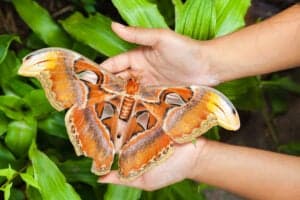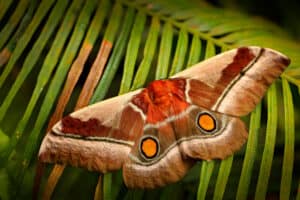For many people, when you mention a moth, they think about the not-so-beautiful flies that throw themselves at light during nighttime. However, there are a variety of other moth species, and some are almost as resplendent as butterflies.
In general, as much as our contact with moths reveals nothing about them other than being lousy flies, moths are actually very interesting animals. We have put together 10 incredible moth facts to corroborate this claim.
1. There Are Up To 160,000 Different Moth Species
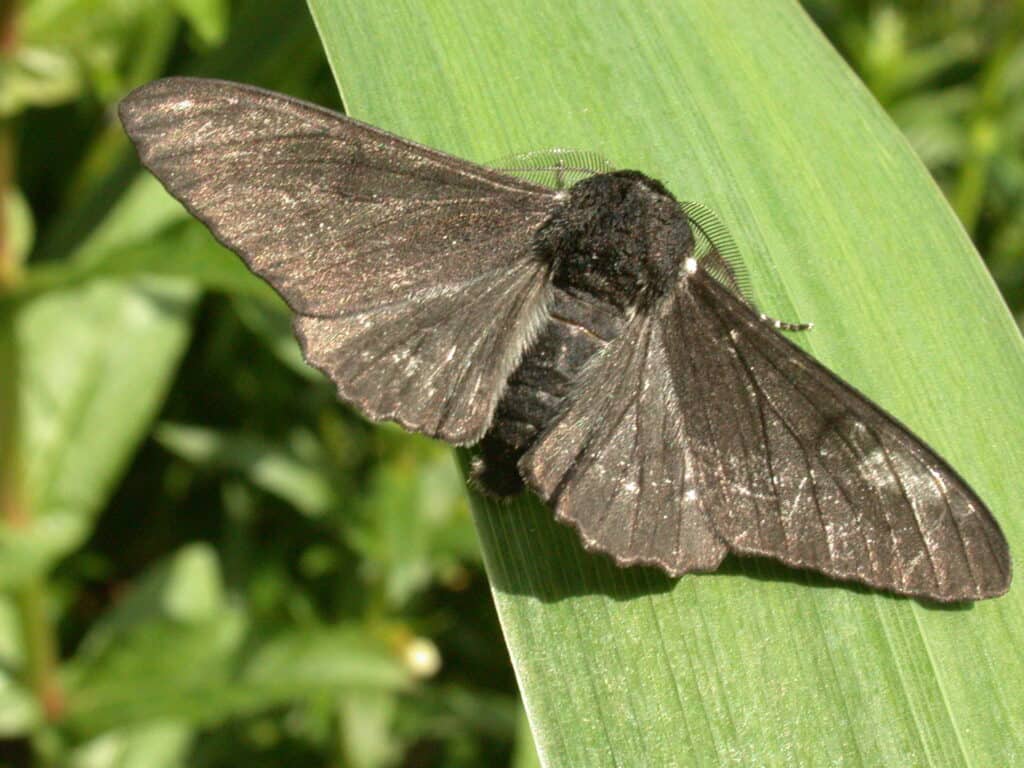
There are about 160,000 different species of moths.
©Steve McWilliam/Shutterstock.com
One of the fascinating things about moths is that there are about 160,000 different species. Notice we didn’t say “individuals.” Now that’s a big number, making them the most populous members of the Order Lepidoptera. As a matter of fact, moths make up about 90% of the order, leaving butterflies with 10%. In other words, for every butterfly, there are about 9 moths. Isn’t that incredible?
Scientists say there are still hundreds of thousands of undiscovered moth species, with some believing strongly that they number up to 500,000 in total.
2. Moths Come In Many Different Sizes
Amidst the hundreds of thousands of moth species, we have incredibly small and giant ones.
The smallest moth species are under a group known as microlepidoptera; the name couldn’t get any more obvious, right? Under that group, we have myriads of infinitesimal moths like the Stigmella maya (from Yucatan, Mexico), with a 0.04-inch forewing, and the Enteucha acetosae (from Britain), with a 0.1-inch wingspan.
We also have some giant moth species of great sizes. The largest moth is the Hercules moth, with a wingspan of up to 14 inches. Then, you have the Asian atlas moth, with an average wingspan of 10.6 inches, and the South American white witch, with an 11-inch wingspan. These are not only the biggest moth species; they are also among the largest insects!
3. Moths Are Very Good At Mimicry And Escaping Predators
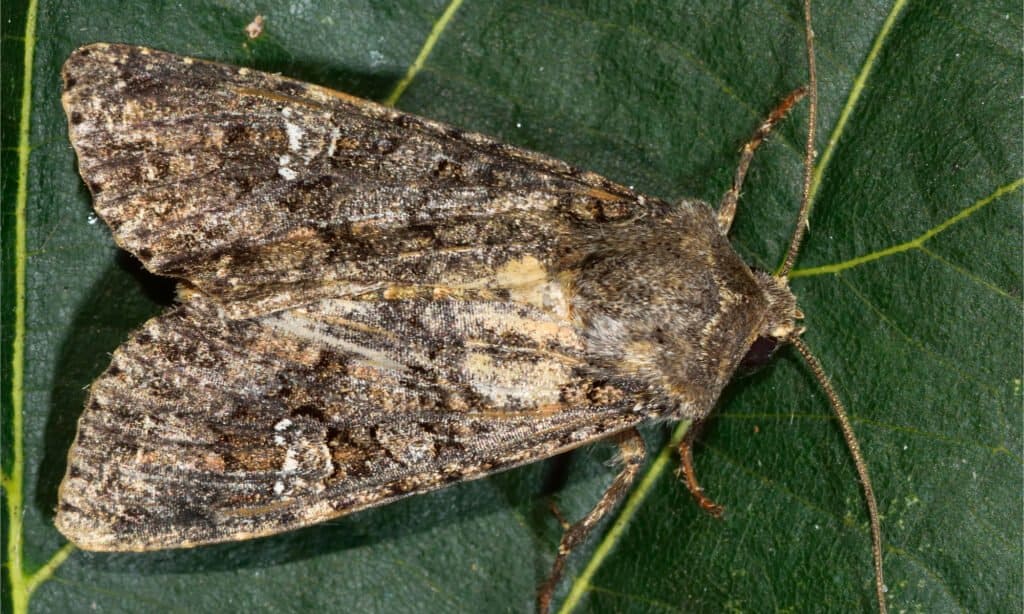
Moths are very good at mimicking different things as a mode of protective camouflage.
©IanRedding/Shutterstock.com
Like the larval stage caterpillars, moths are also very good at mimicking different things as a mode of protective camouflage. They sometimes mimic praying mantises, tarantulas, and also wasps.
Some moths also have the deft ability to mimic bird poop. They do this so well that the predators would often get turned off by the rather unappetizing look.
Tiger moths make ultrasonic clicking noises that sometimes deter sonar-guided bats. In the same vein, some underwing moths often flash their refulgent hindwings to confuse the predators in pursuit of them.
4. Some Moths Do Not Have Mouths
This is not a drill! Some moths actually do not have mouths. “Well, then, how do they feed?” The answer to that is they don’t eat at all. What happens is that these moths store up a lot of energy from their caterpillar days because they only have a few days to live. All they do before dying is reproduce, so they basically don’t develop mouths because they figure they have no need for them.
5. Moths Don’t Have Noses
While a few moths get by without mouths, all moths get by without noses. The incredible part is, even without noses, they have a splendid sense of smell, all thanks to their antennae. The male moths are the more excellent smellers. An example is the male giant silk moth, which can smell females 7 miles away and even go as far as sensing their hormone molecules. All from 7 miles away!
Female moths also have a good sense of smell. Experts say they can determine a male’s reproductive strength by using the scent of his pheromones.
6. Some Moths Actually Fly During The Day
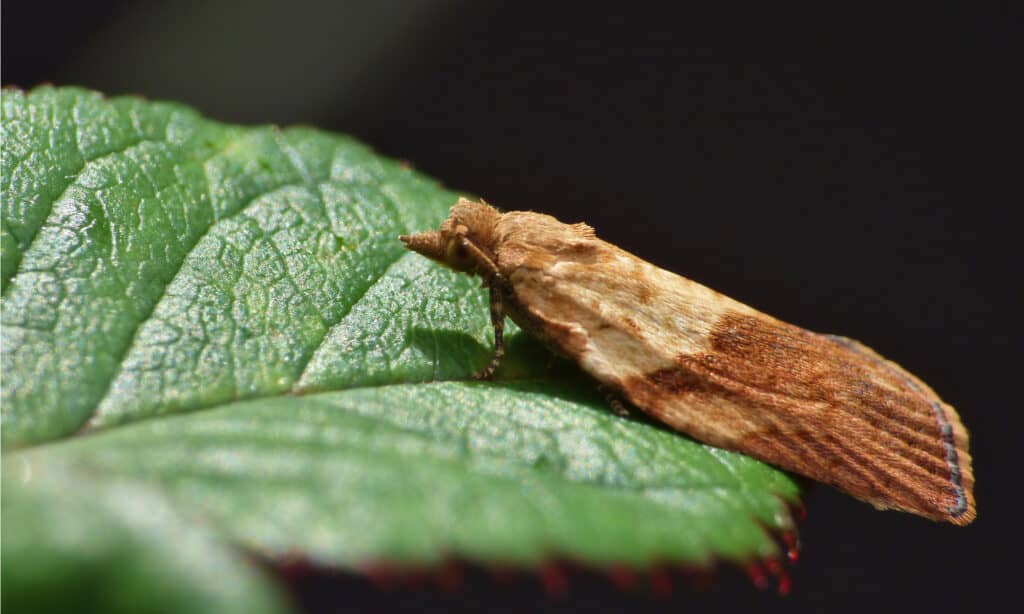
Some moths defy nocturnal expectations and fly during the day.
©Jordan Roper/Shutterstock.com
If we were to ask you what time of day it was the last time you saw a moth, your answer would most likely be “in the night.” The truth is, most moths are nocturnal, which is why you’d often see them at night. However, some moths actually defy nocturnal expectations and fly during the day. Examples include tiger moths, clearwing moths, wasp moths, and owlet moths, amongst others.
7. Moths Are Attracted To Beer
Everyone knows moths are attracted to light bulbs but did you know they are also attracted to beer? Moths are very much attracted to stale beer. Don’t believe us? Put some stale beer near a lamp in the night and see what happens. You can also mix beer with some brown sugar and ripe banana and paint onto the bark of a tree; moths consider that an official invitation.
8. Some Moths Migrate
You have probably heard a lot about different species of birds consciously migrating from one place to another. However, we don’t hear so much about insects or moths migrating. Well, we are here to inform you that moths also migrate, usually to find food or escape hostile climates. For instance, hummingbird moths have been observed to migrate from North Africa to Britain. Black cutworm moths also migrate from the Gulf Coast (United States), where they spend their winter, to the north during spring.
9. Some Moths Are Excellent Pollinators
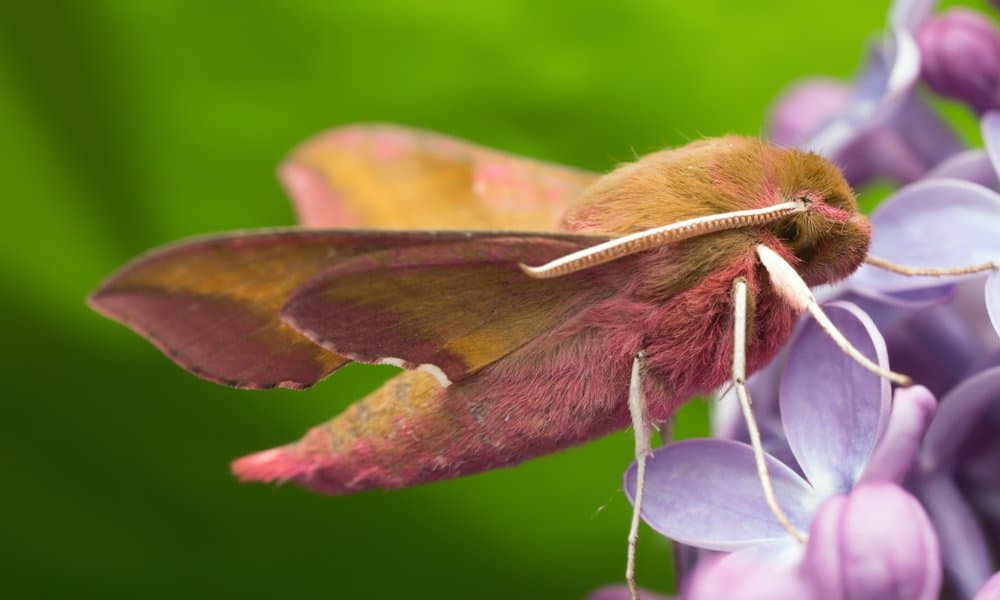
Some moths get involved in pollination.
©Henrik Larsson/Shutterstock.com
Pollination is a very important botanical process that involves the transfer of pollen from plants. While bees and butterflies are often given the most credit for it, some moths actually get involved in pollination. They include sphinx moths, geometer moths, and owlet moths, amongst others.
In fact, a plant type called the yucca plant needs yucca moths to cross-pollinate their flowers, and these moths have tentacles just fitting for this purpose.
10. Moths Can Be Very Colorful
We mentioned earlier that the image of a moth most people have in their heads is a drab-colored flying insect. However, not all moths are drab and brownish. There are also black, red, yellow, and even pink moths. And while they are generally not considered remotely as cute as butterflies, they can certainly hold their own. Some people even mistake some of these moths for butterflies because of their beautiful colors. Examples include comet moths, lime hawk-moths, oleander hawk-moths, garden tiger moths, and galium sphinx moths, amongst others.
The photo featured at the top of this post is © IanRedding/Shutterstock.com
Thank you for reading! Have some feedback for us? Contact the AZ Animals editorial team.





